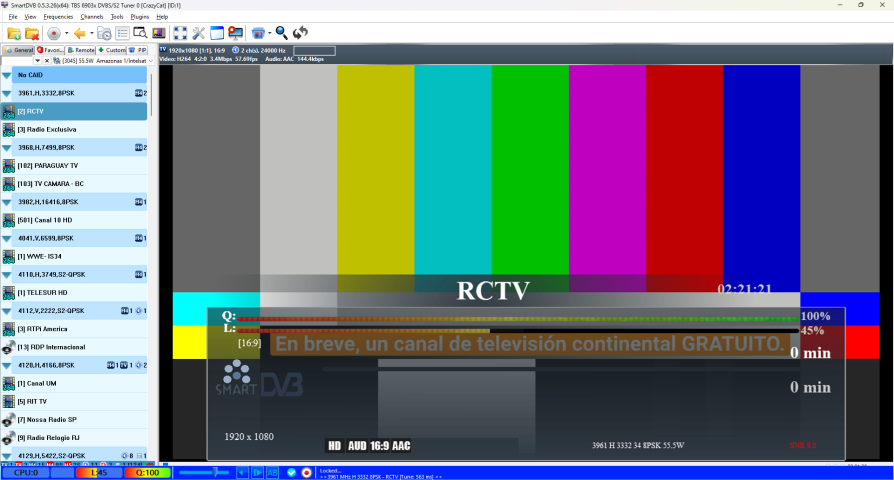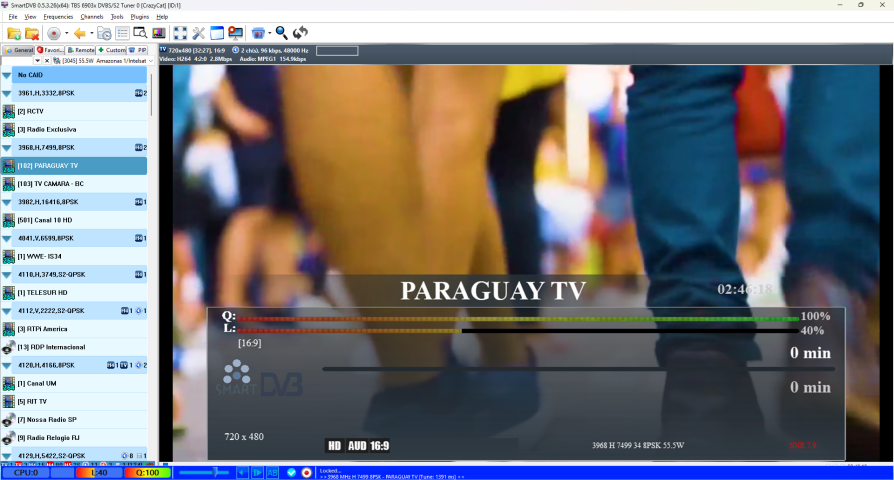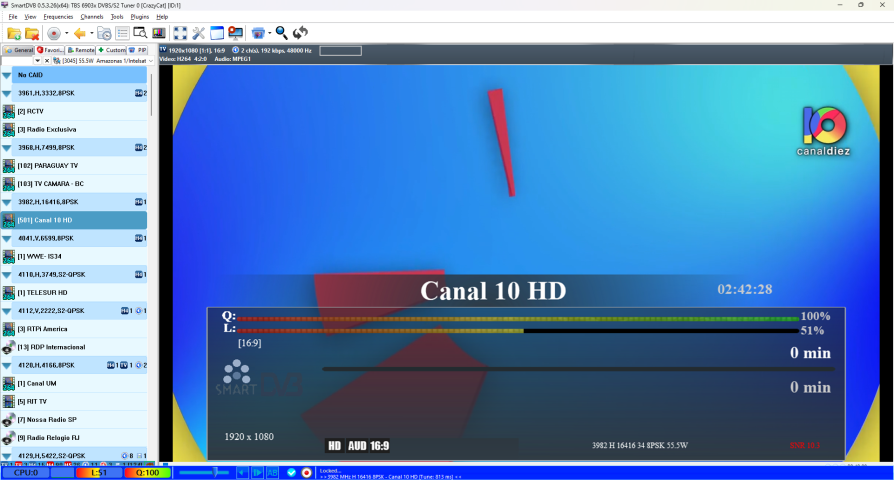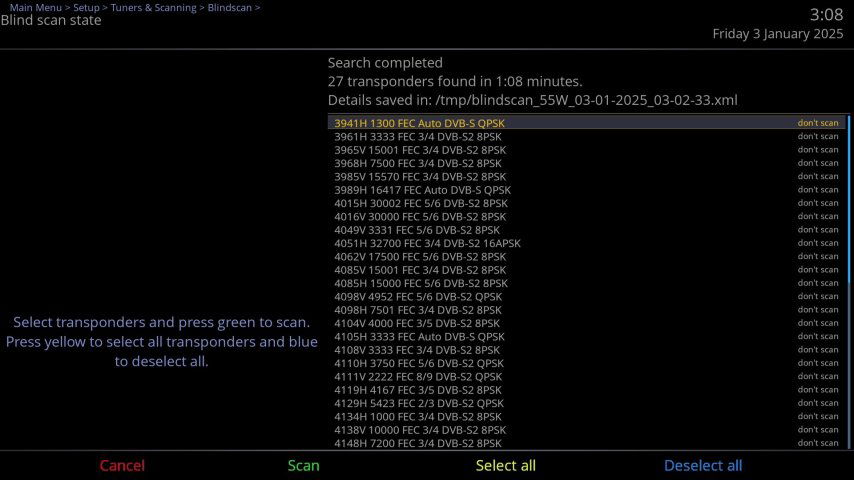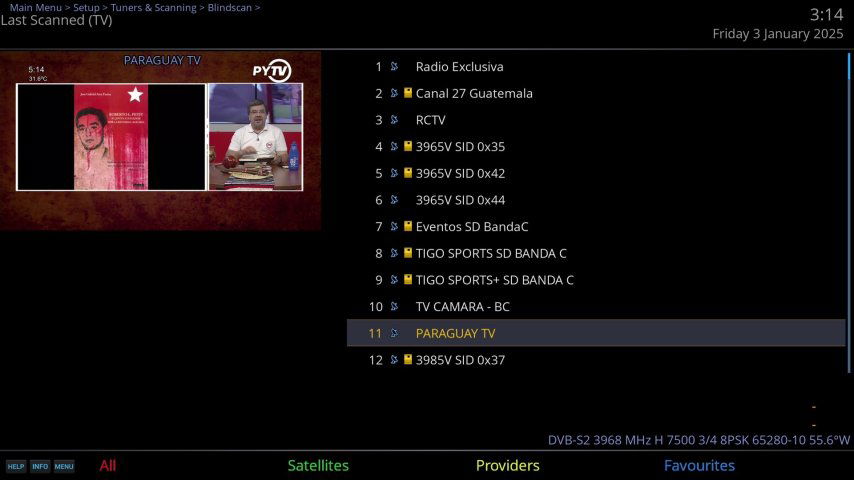I recently received the new C140 and C240 5G filtered BLUE LNBFs from Titanium Satellite https://titaniumsatellite.com/products.php
The C140 has one output and the C240 has two. The pass band for both LNBFs is from 4,000 to 4,200 MHz. Most North American satellites have moved all of their transponders to this 200 MHz frequency range, with the exception of 115W and 117W which are intended for Mexico.
This first signal graph is from an older LNBF that has a pass band of 3,800 to 4,200 MHz. As you can see, the 5G signal spikes at my QTH are quite strong!

The signal graph below is from the new Titanium C140 LNBF, taken from the same dish and the same satellite as above. It filters 5G very well below 4,000 MHz.

Graphs are useful, but the most important consideration is how well do these LNBFs perform with actual FTA TV viewing? I scanned each satellite from 103W to 139W and I didn't see any reception glitches.
When mounting these LNBFs, the "0" mark on the back should be adjusted so that it is horizontal (parallel to the horizon).

The LNBF package includes a scalar ring, 7 mounting screws, an allen wrench, a dielectric slab for circular polarity reception, and an installation guide with specifications.
The photo below compares the size of the C140 (in front) with the older C138. You can see that the C140 has a larger circuit board container, which is very well sealed to prevent moisture intrusion.

In summary, I am very pleased with the performance of these 2 new LNBFs. If you are experiencing any 5G interference in your C-Band reception, I highly recommend the Titanium C140 and C240 LNBFs.
The C140 has one output and the C240 has two. The pass band for both LNBFs is from 4,000 to 4,200 MHz. Most North American satellites have moved all of their transponders to this 200 MHz frequency range, with the exception of 115W and 117W which are intended for Mexico.
This first signal graph is from an older LNBF that has a pass band of 3,800 to 4,200 MHz. As you can see, the 5G signal spikes at my QTH are quite strong!
The signal graph below is from the new Titanium C140 LNBF, taken from the same dish and the same satellite as above. It filters 5G very well below 4,000 MHz.
Graphs are useful, but the most important consideration is how well do these LNBFs perform with actual FTA TV viewing? I scanned each satellite from 103W to 139W and I didn't see any reception glitches.
When mounting these LNBFs, the "0" mark on the back should be adjusted so that it is horizontal (parallel to the horizon).
The LNBF package includes a scalar ring, 7 mounting screws, an allen wrench, a dielectric slab for circular polarity reception, and an installation guide with specifications.
The photo below compares the size of the C140 (in front) with the older C138. You can see that the C140 has a larger circuit board container, which is very well sealed to prevent moisture intrusion.
In summary, I am very pleased with the performance of these 2 new LNBFs. If you are experiencing any 5G interference in your C-Band reception, I highly recommend the Titanium C140 and C240 LNBFs.


